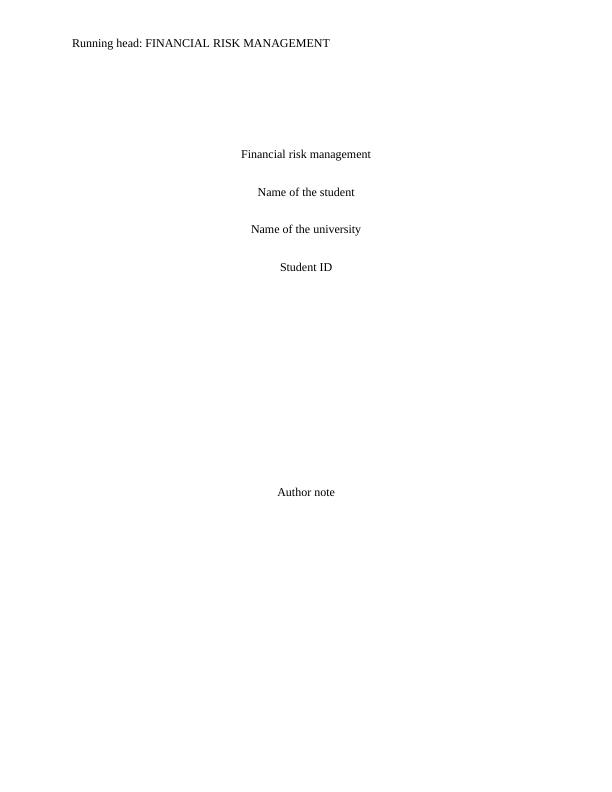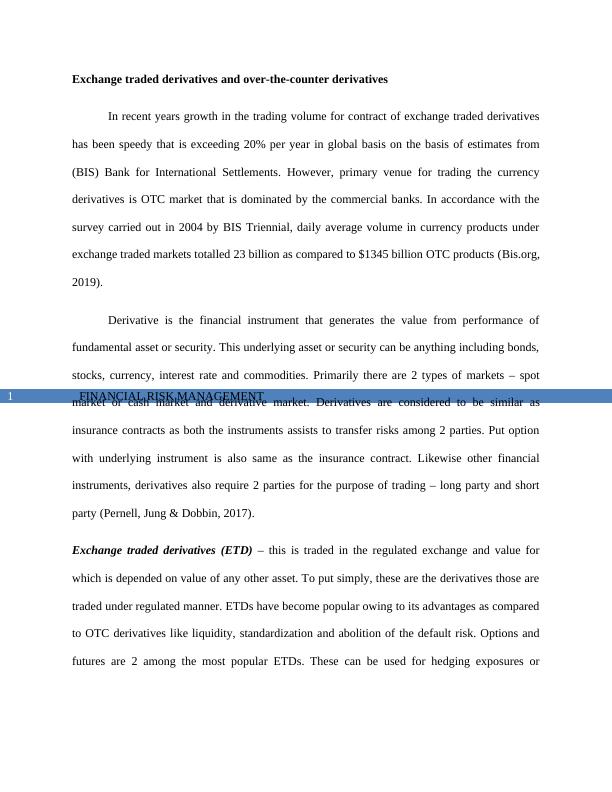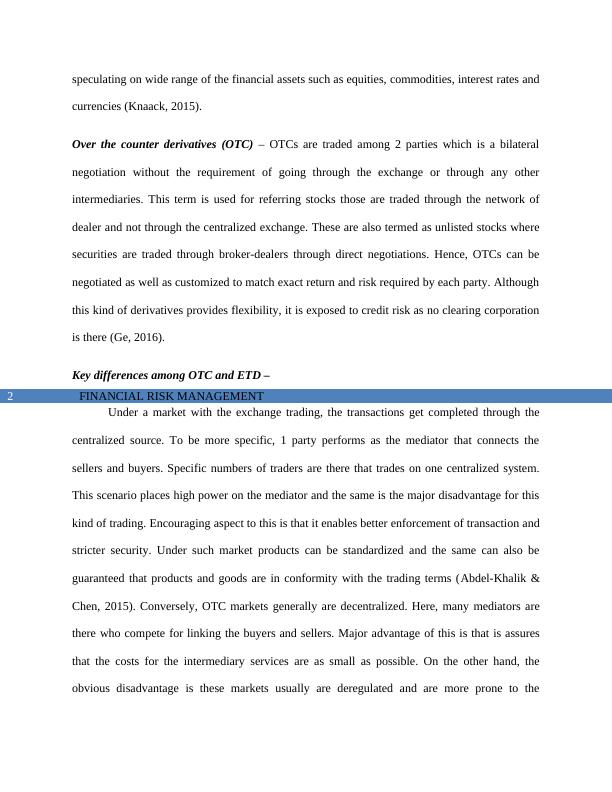THE FINANCIAL RISK MANAGEMENT
Undertake a review of the existing literature and empirical work on the use of exchange traded derivatives vs over-the-counter derivatives, highlighting the key differences and similarities between the two, critiquing their use, and examining empirical findings on the use of exchange traded derivatives for risk management compared to over-the-counter derivatives.
Added on 2022-09-03
THE FINANCIAL RISK MANAGEMENT
Undertake a review of the existing literature and empirical work on the use of exchange traded derivatives vs over-the-counter derivatives, highlighting the key differences and similarities between the two, critiquing their use, and examining empirical findings on the use of exchange traded derivatives for risk management compared to over-the-counter derivatives.
Added on 2022-09-03
End of preview
Want to access all the pages? Upload your documents or become a member.



